Conditions: Flat Feet
Flat feet, or fallen arches, occur when the arches of the feet collapse, causing the entire sole to make full contact with the ground.
While this condition is common and sometimes asymptomatic, it can lead to discomfort and pain, particularly in the feet, ankles and legs. Understanding the symptoms, causes, and treatment options can help individuals manage the condition effectively.
Orthotics Plus provides care for individuals with flat feet in the Melbourne community, offering personalised assessments and custom orthotics to improve comfort, support, and mobility.
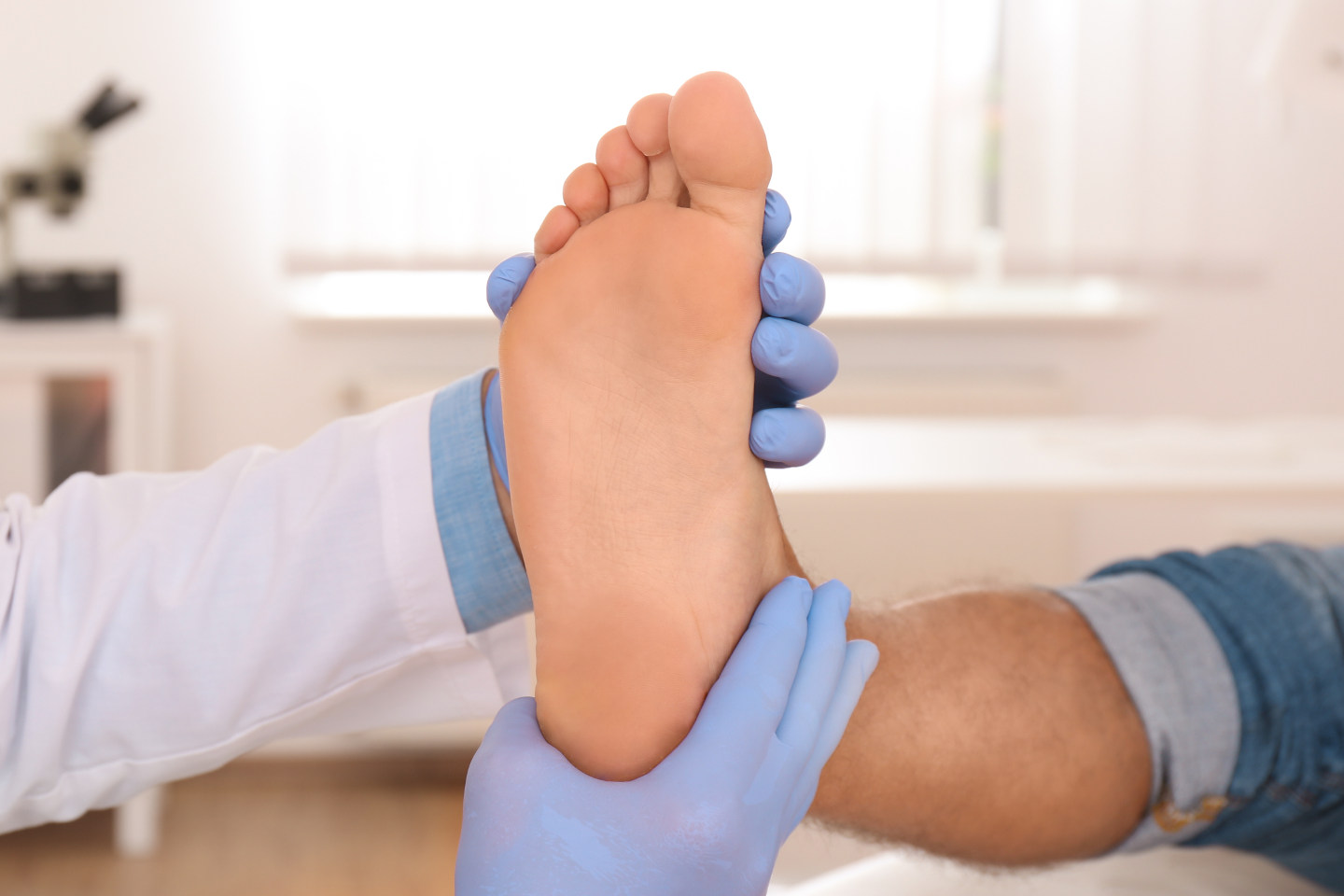
Common Symptoms of Flat Feet
People with flat feet may experience a range of symptoms, depending on the severity of their condition. Some of the most common issues include:
- Pain in the arch and ankle – Due to the biomechanical forces at play, individuals often develop discomfort in the inner ankle (stretching force), outside ankle (compressive force) and arch region (straining)..
- Knee and lower back pain – Poor foot posture can misalign the lower limbs, leading to strain on the knees and lower back.
- Lateral ankle pain – Instability in the foot structure may cause pain on the outer ankle.
- Fatigue and discomfort – Individuals may experience tired or achy feet after prolonged standing or walking.
Many people seek treatment after attempting physiotherapy exercises that provide some relief but do not fully resolve their symptoms. In such cases, orthotics may be a beneficial addition to a treatment plan.
We often find that people with flat feet are hypermobile in their joints and ligaments and the flat feet isn’t due to ‘weak’ feet as many may wish you to believe.
Many athletes and very active people have flat feet and it is simply their anatomy.
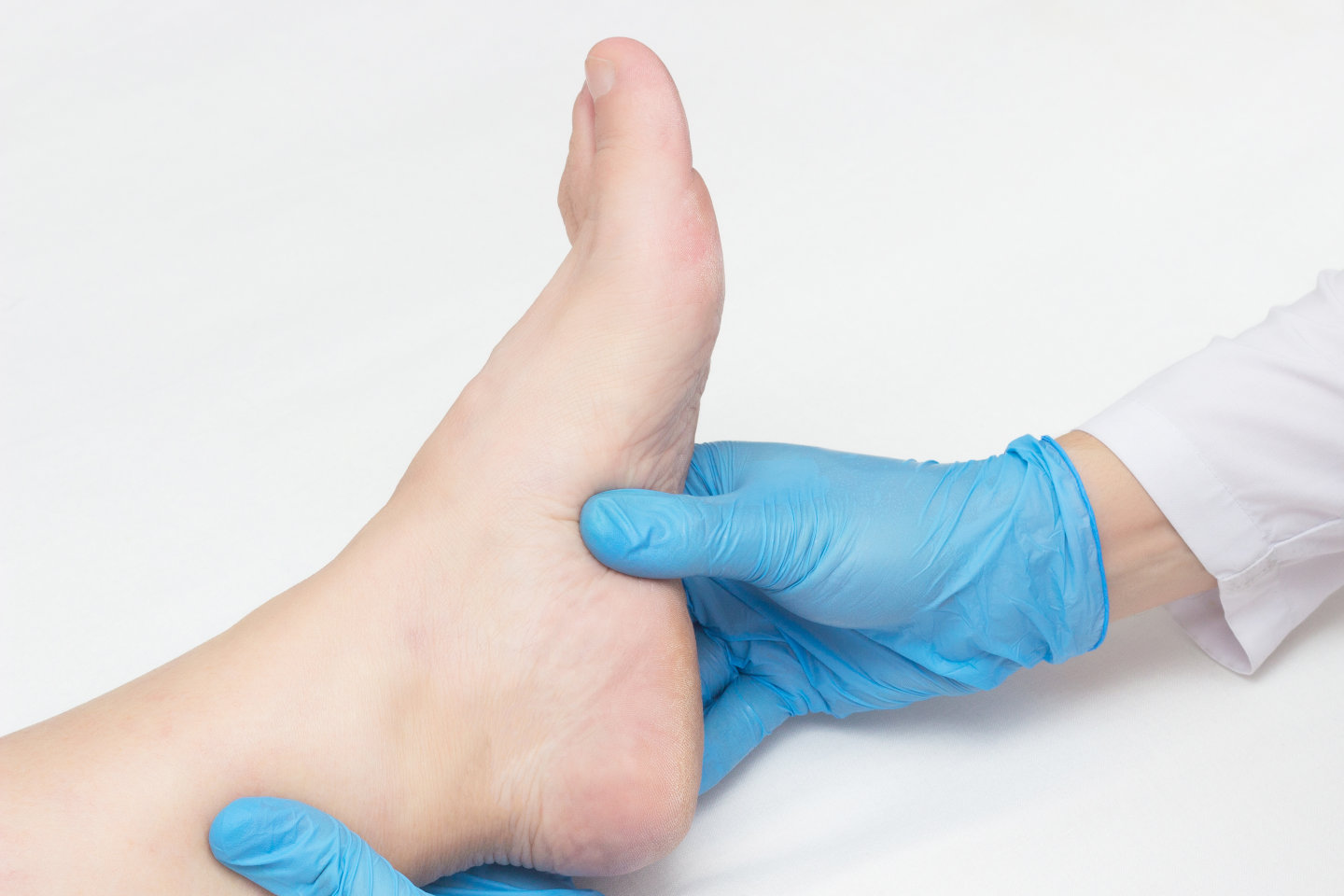
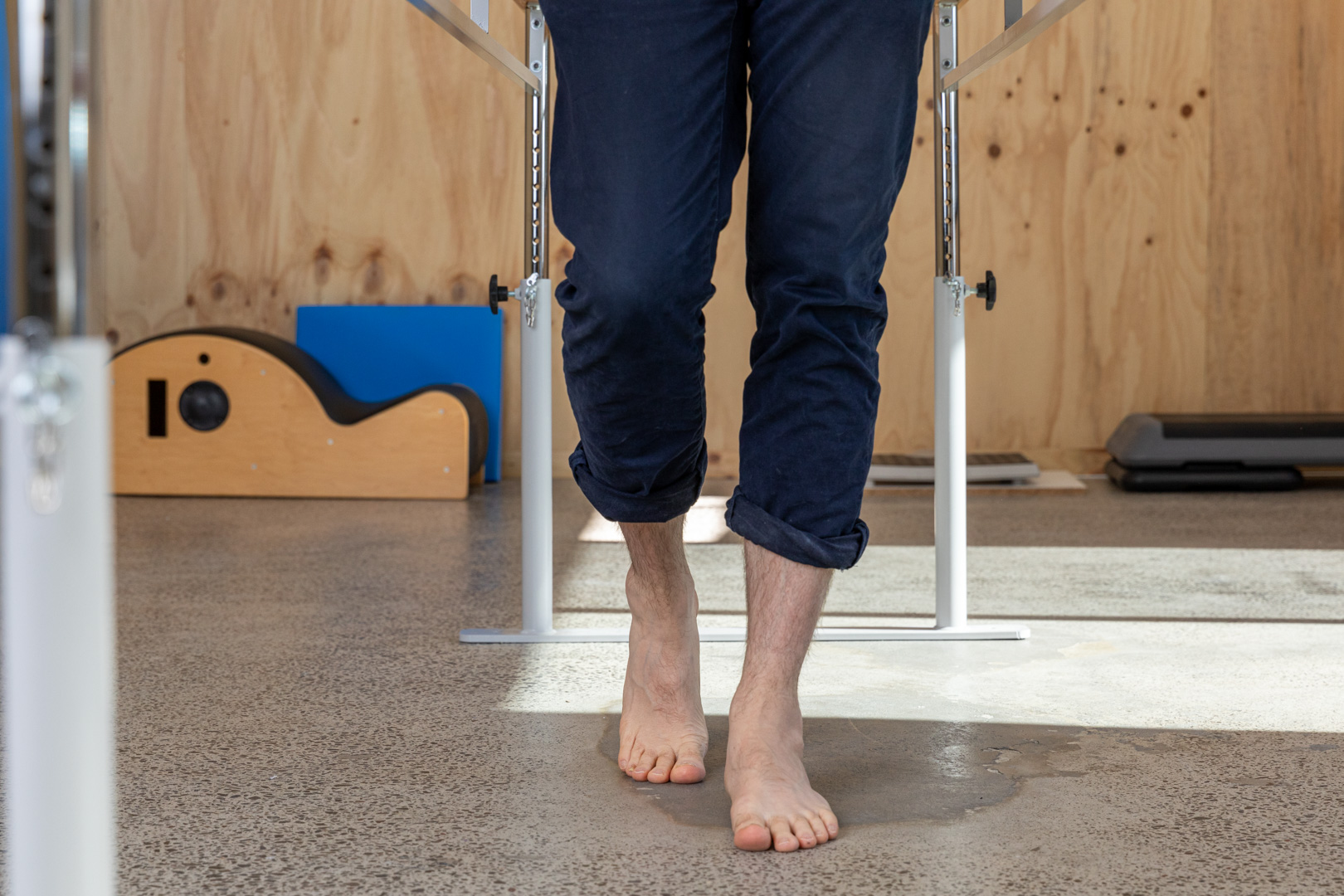
Related Conditions
Flat feet can contribute to or exacerbate other foot and lower limb conditions, including:
- Plantar fasciitis – Inflammation of the plantar fascia due to improper weight distribution.
- Achilles tendonitis – Increased strain on the Achilles tendon due to altered foot mechanics.
- Calf tightness – Muscle imbalances may lead to tightness in the calf and contribute to foot pain.
However, not everyone with flat feet will develop these conditions.
Other factors, such as muscle strength, weight, loading, and flexibility play a role in whether additional issues arise.
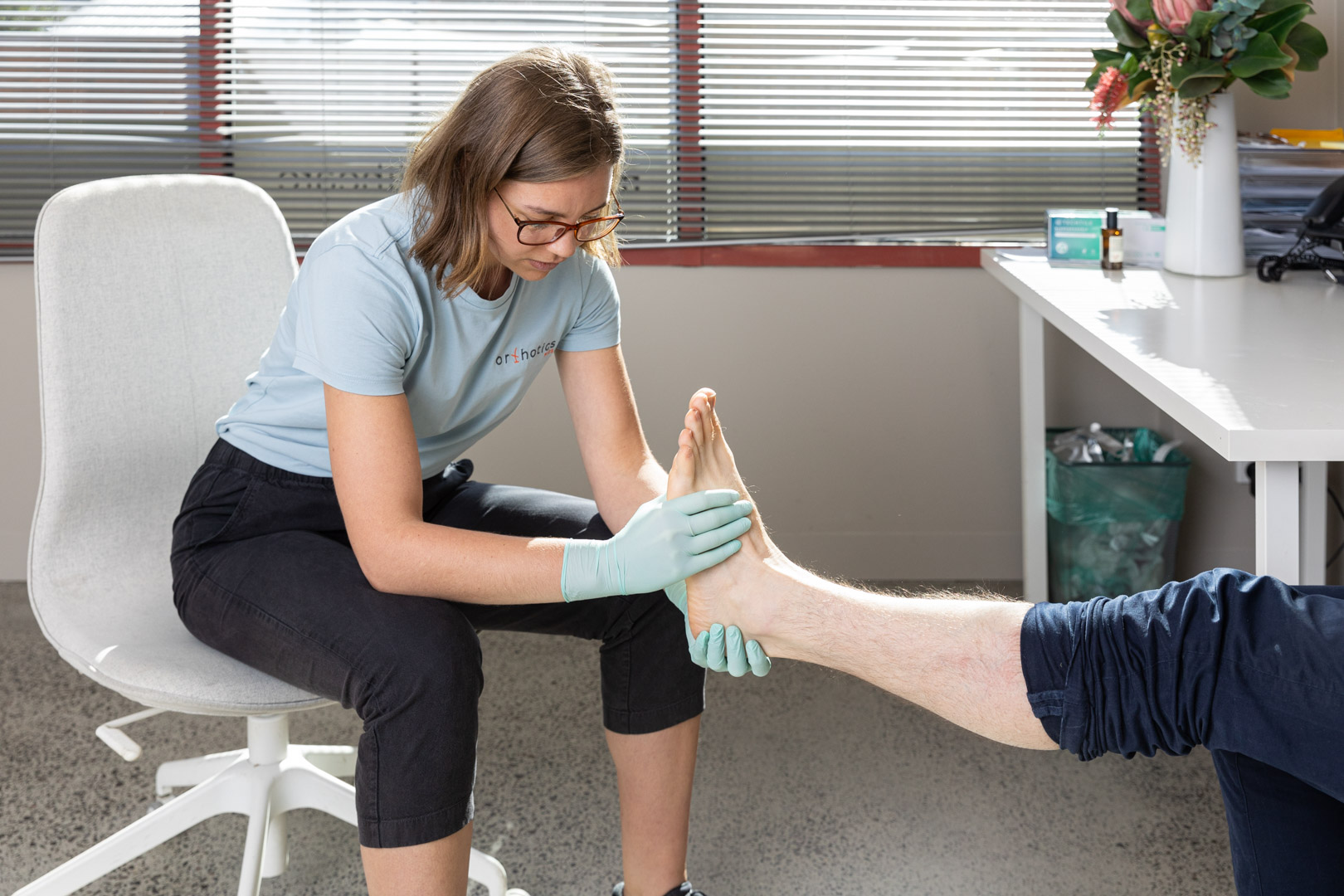
Causes of Flat Feet
While genetics play a significant role in flat feet, other factors can contribute to the condition, including:
- Muscle imbalances – Weakness or tightness in the muscles surrounding the foot and lower leg can alter foot posture.
- Injury or trauma – Repetitive ankle sprains, fractures, or accidents can weaken the foot’s structure, causing the arches to collapse.
- Chronic ankle instability – Frequent rolling of the ankle can lead to permanent changes in foot posture.
- Age-related changes – Ligament laxity and weakening of the foot’s supportive structures can cause arch collapse over time.
In some cases, there is no clear cause, and flat feet may simply be a matter of biomechanics and individual anatomy.
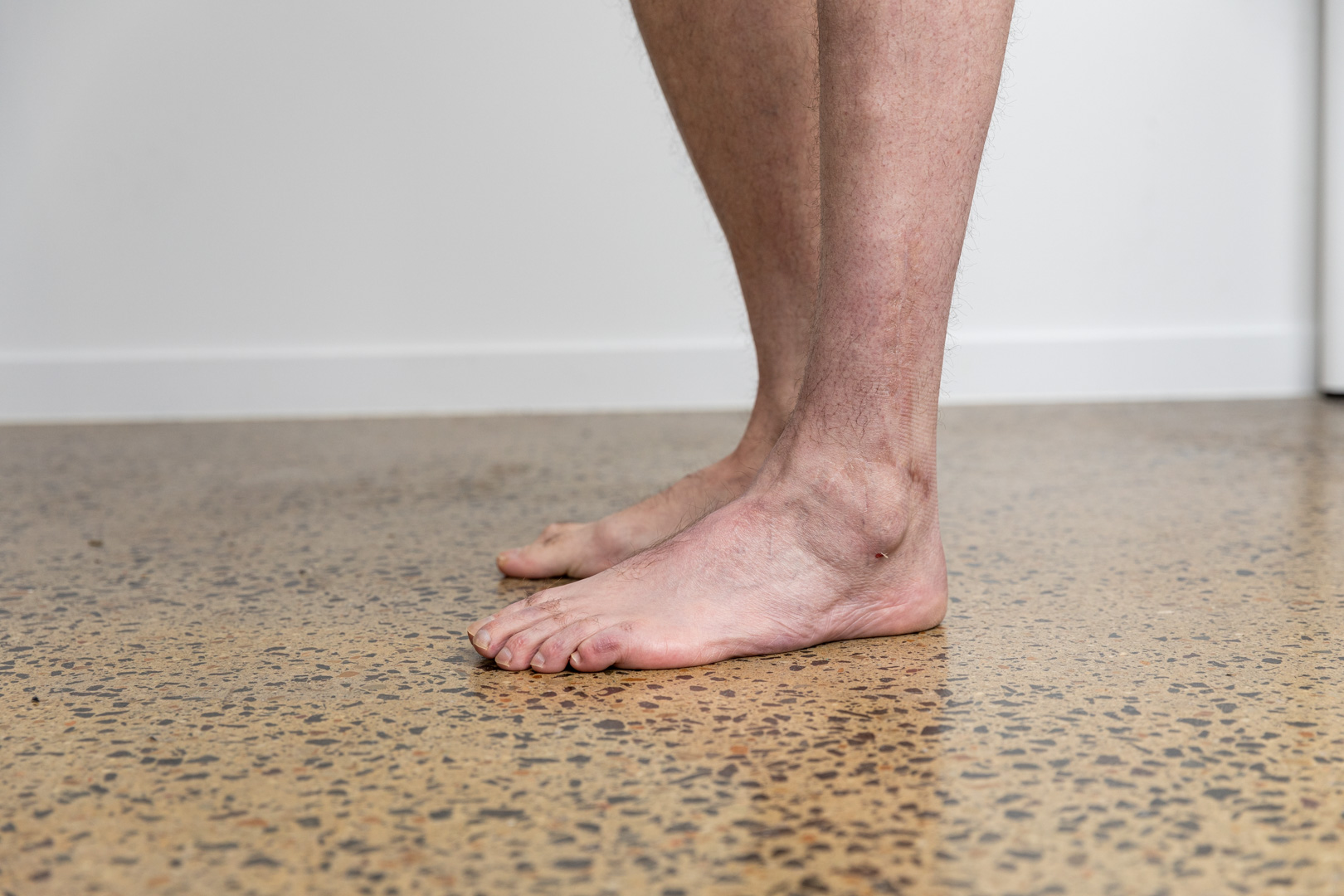
Impact on the Rest of the Body
Flat feet affect more than just the feet—they impact overall biomechanics and movement patterns. Without proper arch support, the body loses a natural form of shock absorption, leading to:
- Increased stress on the knees, hips, and lower back.
- Altered walking mechanics, where the knees may collapse inward, affecting hip alignment.
- Increased muscle fatigue and overuse injuries due to compensatory movement patterns.
- Increased internal tibial rotation each step
Addressing flat feet early can help prevent these secondary issues from developing.

Orthotics and Treatment Options
Custom orthotics are often recommended for flat feet, but their design depends on the individual’s needs. Important factors to consider include:
- Level of correction – Some flat feet are flexible and can tolerate more arch support, while rigid flat feet may require minimal correction.
- Hindfoot alignment – If the heel rolls inward excessively (valgus positioning), additional medial support may be necessary.
- Forefoot pain considerations – Some individuals develop metatarsal pain due to prolonged poor foot posture, requiring additional cushioning or support.
- Adjustability – Some orthotics allow for modifications over time, increasing or decreasing arch height as needed.
For children, prefabricated orthotics may be a more cost-effective solution, as their feet continue to grow and change shape.
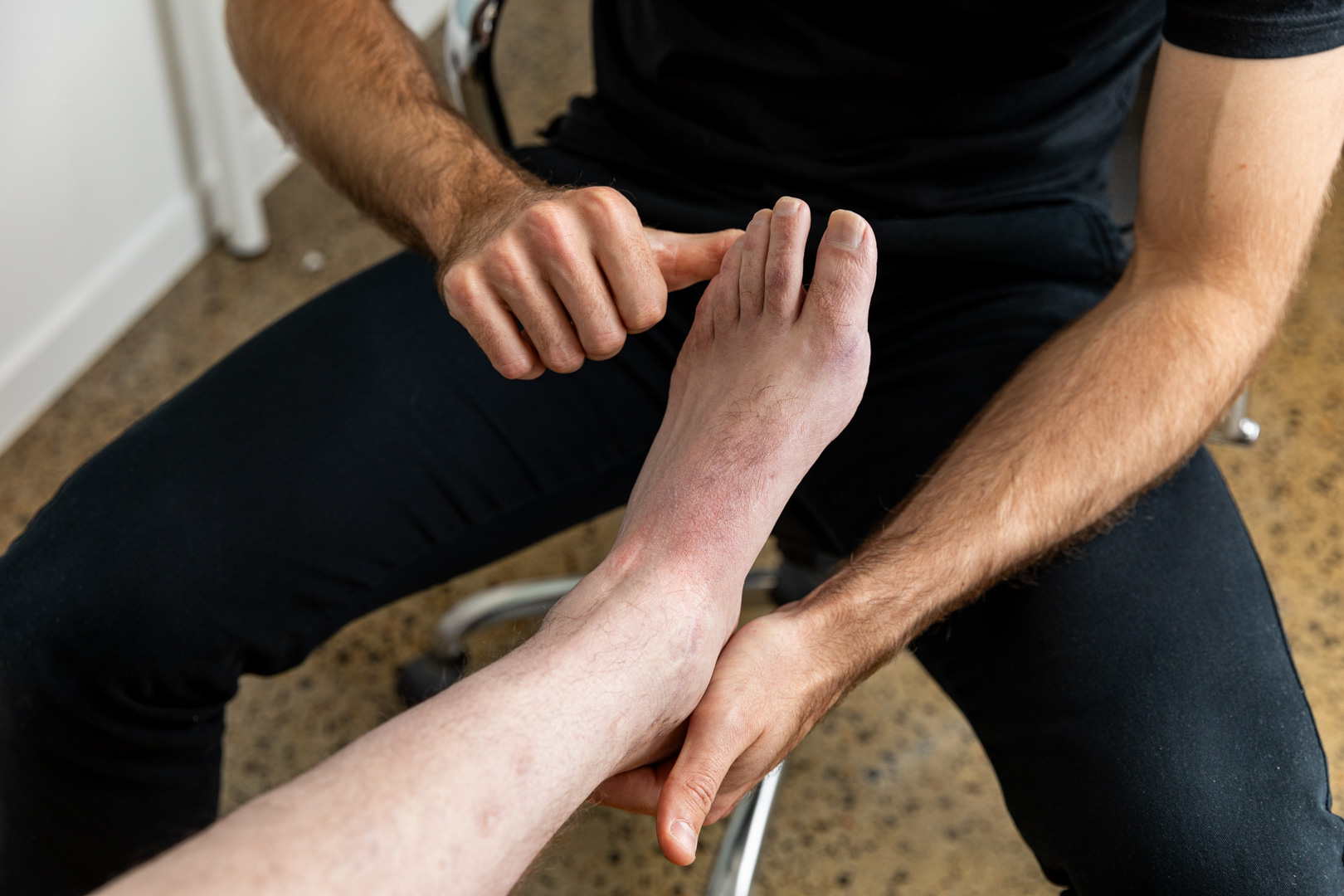
Adjusting to Orthotics
Orthotics should be customised to a person’s comfort level. Some people start with moderate arch support and gradually increase it, while others may need modifications to reduce discomfort.
Typically, orthotic fittings are followed up with a review after a few weeks to assess comfort and make necessary adjustments.
If you have any concerns or queries about adjusting to orthotics, please contact us to discuss.

Long-Term Management of Flat Feet
Flat feet are generally a lifelong condition and cannot be permanently “fixed” with orthotics alone. However, managing symptoms through supportive footwear, strengthening exercises, and custom orthotics can significantly improve comfort and mobility.
It’s important to wear orthotics in daily footwear, including work, school, and sports shoes, to maintain proper foot alignment. Occasional deviations, such as wearing formal shoes for special events, will not cause long-term harm as long as supportive footwear is worn most of the time.
By understanding the causes and treatment options for flat feet, individuals can take proactive steps to reduce discomfort and maintain an active lifestyle.

We’re Excited to Help You Find the Perfect Foot Support!
Orthotics Plus has focused on treatment of the feet and ankles for over a decade.
- We create professional, high quality custom orthotics – perfectly tailored to your feet
- We support you during and after the appointment with any adjustments necessary
- Save time, choose between one of our many Melbourne locations
- Our friendly Australian team looks forward to supporting you
To get started with Orthotics Plus, please use our clinic locations pages.
